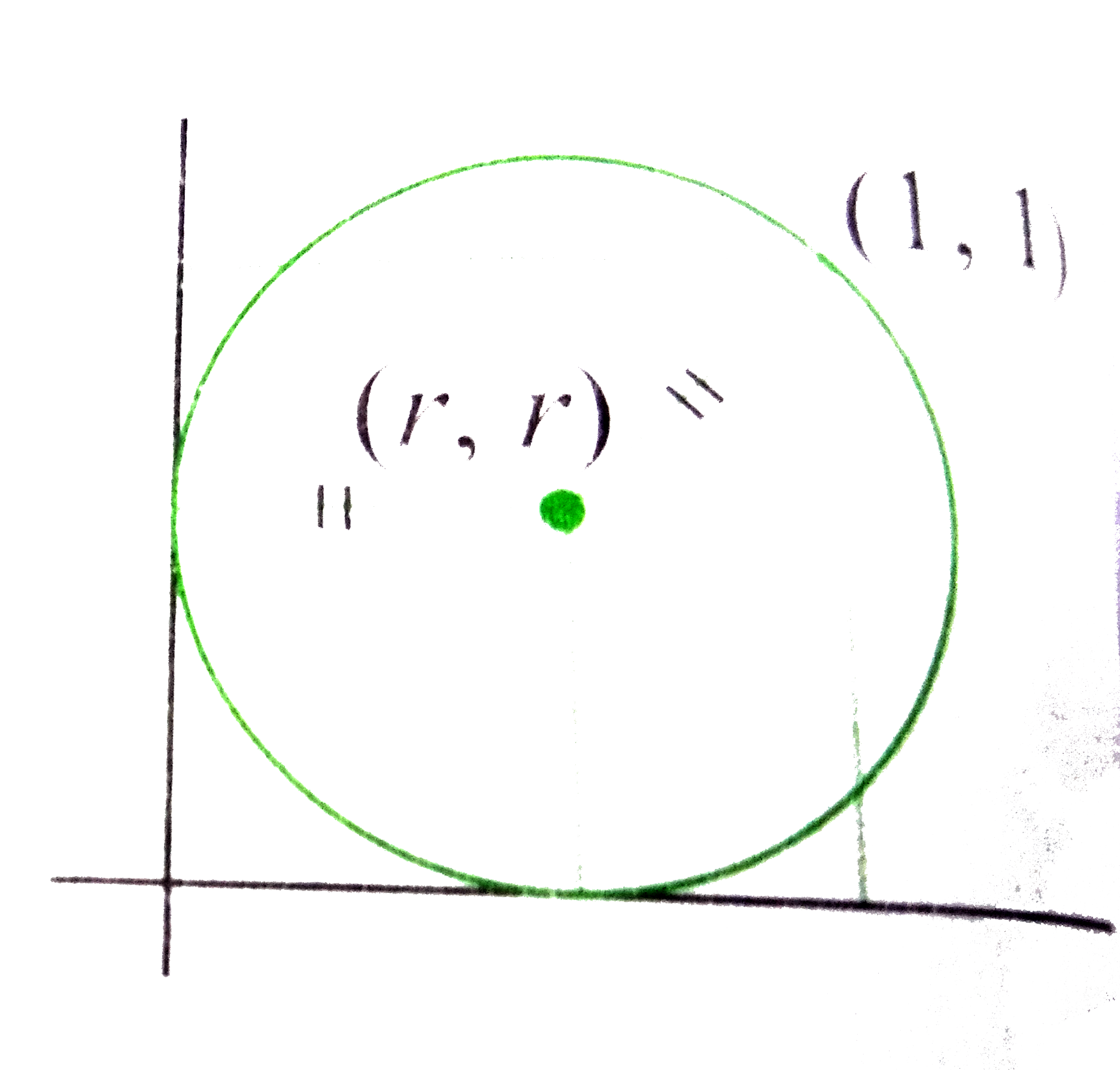ABCD is a square of unit area. A circle is tangent to two sides of ABCD and passes through exactly one of its vertices. The radius of the circle is (a) 2−√2 (b) √2−1 (c) √2−12 (d) 1√2
2−√2
√2−1
1/2
1√2
The correct Answer is:1
From the figure,
2(1−r)2=r2
or √2(1−r)=r
or r(√2+1)=√2
or r=√2√2+1=√2(√2−1)=2−√2

Topper's Solved these Questions
- BOOK - CENGAGE ENGLISHCHAPTER - CIRCLE EXERCISE - Multiple Correct Anser Type29videos
CIRCLE
- BOOK - CENGAGE ENGLISHCHAPTER - CIRCLE EXERCISE - Linked Comprehension Type (For Problem 1-3)3videos
CIRCLE
- BOOK - CENGAGE ENGLISHCHAPTER - CIRCLE EXERCISE - CONCEPT APPLICATION EXERCISE 4.201videos
CIRCLE
- BOOK - CENGAGE ENGLISHCHAPTER - BINOMIAL THEOREMEXERCISE - Matrix4videos
BINOMIAL THEOREM
- BOOK - CENGAGE ENGLISHCHAPTER - CIRCLESEXERCISE - Comprehension Type8videos
CIRCLES
Similar Questions
The line 2x−y+1=0 is tangent to the circle at the point (2, 5) and the center of the circle lies on x−2y=4. The radius of the circle is (a) 3√5 (b) 5√3 (c) 2√5 (d) 5√2
View SolutionThe value of √3−2 √2 is
(a)√2−1
(b) √2+1
(c) √3−√2
(d) √3+ √2View SolutionThe rationalisation factor of √3 is
(a)−√3
(b) 1√3
(c) 2√3
(d) −2√3View SolutionMaximum value of |z+1+i|, where z∈S is
(a)√2
(b) 2
(c) 2√2
(d) 3√2View SolutionRadius of the circle that passes through the origin and touches the parabola y2=4ax at the point (a,2a) is (a)5√2a (b) 2√2a (c)√52a (d) 3√2a
View SolutionTwo equal circles of radius r intersect such that each passes through the centre of the other. The length of the common chord of the circles is √r (b) √2 r AB (c) √3 r (d) √32 r
View Solution∫√20[x2]dx is equal to (A) 2−√2 (B) 2+√2 (C) √2−1 (D) √2−2
View SolutionA circle S of radius 'a' is the director circle of another circle S1,S1 is the director circle of circle S2 and so on. If the sum of the radii of all these circle is 2, then the value of 'a' is (a) 2+√2 (b) 2−1√2 (c) 2−√2 (d) 2+1√2
View Solution1√9− √8 is equal to:
(a)3+2√2
(b) 13+2√2
(c) 3−2√2
(d) 32− √2View SolutionThe value of sin(14sin−1(√638)) is (a) 1√2 (b) 1√3 (c) 12√2 (d) 13√3
View Solution

